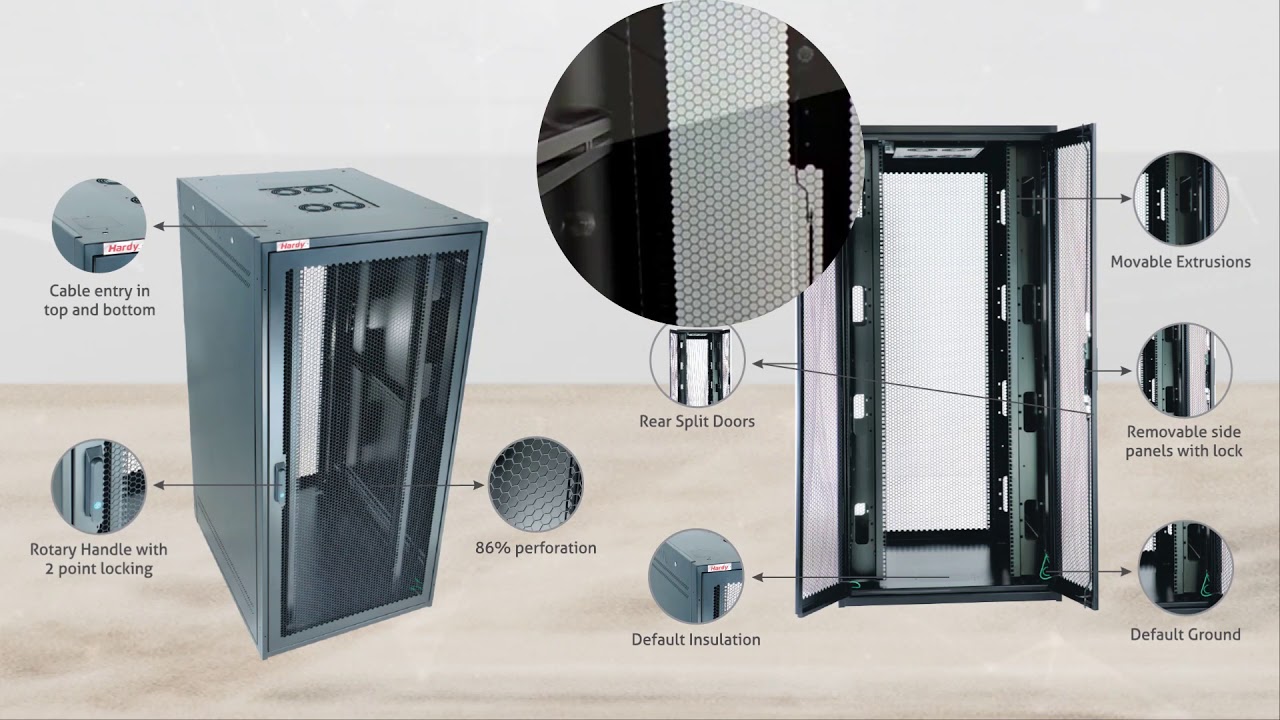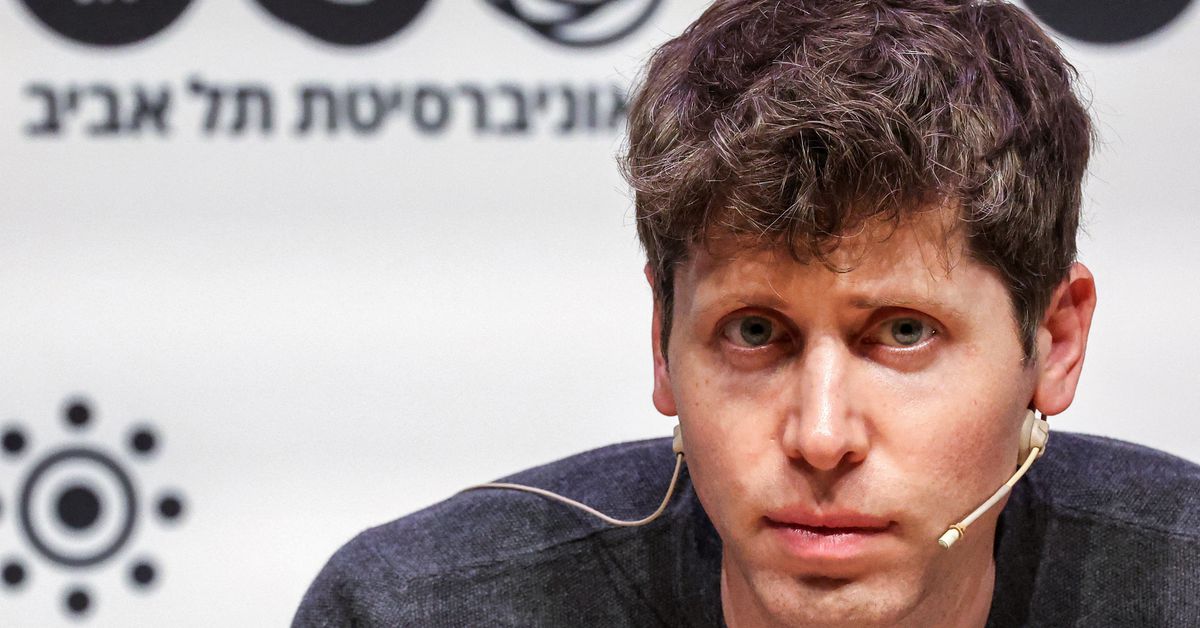Here’s the thing about asking investors for money: they want to see returns.
Technology
Green flags for defense tech and Silicon Valley’s longevity obsession

This episode of Equity had so many themes: VC karaoke, the SpaceX economy, no moats for AI, OpenAI versus open source. You know it’s going to be good when the conversation between host Kirsten Korosec and fellow TCers Devin Coldewey and Margaux MacColl starts with the evergreen question: is it ever OK to use shirtless photo of yourself for your workplace Slack profile? Answer: yeah, nope.
AI was a topic yet again at Equity. But it wasn’t just the same ol’ same ol. Sure, there was a bit of riffing on the absolutely nutty valuations coming out of the AI sector. But we also weighed in on YC Demo Day — including mentions of few non-AI and AI startups that got our attention.
We made some space for space (see what I did there) on Equity as well, specifically to talk about a curious startup called Reflect Orbital, which is developing satellites to deploy large mirrors to precisely reflect sunlight onto specific points on the ground. The startup envisions a future where the sun can be turned on and off like a flashlight. Devin was skeptical and much our of conversation centered on one Shaun Maguire, a well-known VC who backed Reflect and who led Sequoia’s 2019 investment in SpaceX.
Speaking of VCs and trends in Silicon Valley, Margaux weighed in on two hot topics: defense tech and the continued popularity of dual-use startups and the ongoing interest (obsession?) in longevity tech among some investors. On the longevity front, the gang chatted about Synex, a startup building a portable MRI capable of testing glucose and other important molecules without the need to extract blood.”
Meanwhile, over in the defense tech sector, we talked about how startups like Pyka have gained backers and potential government customers by expanding how their tech is applied. Pyka, is an electric aviation startup that started with a focus on crop-dusting and cargo plane lines, but has found interest from the defense sector.
Equity is TechCrunch’s flagship podcast, produced by Theresa Loconsolo, and posts every Monday, Wednesday, and Friday.
Subscribe to us on Apple Podcasts, Overcast, Spotify, and all the casts. You also can follow Equity on X and Threads, at @EquityPod. For the full episode transcript, for those who prefer reading over listening, check out our full archive of episodes over at Simplecast.
Servers computers
Hardy 42U Server Rack Benefits Video

Looking for reliable server racks for your data center?
Here are 10 reasons to choose the premium perforated racks from Hardy Racks!
Number 1.
The front and back sides of the rack come with a total perforation of 86%, an excellent means to dissipate over 3.5 Kilowatts of heat while allowing the free inflow of cool air.
Number 2.
The heavy-duty metal body of the 42U rack comes with a load-bearing capacity of up to 1200 kilograms!
Number 3.
The perforated front door and the perforated, space-saving split rear doors come with a one-click removable feature – and can be fitted or removed without any tools!
Number 4.
The side panels are also detachable. They come with the provision to be kept locked when not in use. These features make the massive 42U rack easy to transport, install, and seamless to work with during maintenance!
Number 5.
The sticker-free numbering of U positions – both from the top to bottom and bottom to top – makes it really convenient for identifying rack positions for installation, troubleshooting and maintenance!
Number 6.
5 cable entries on the top and 5 cable entries at the bottom – provide you with the option to bring in your cables easily, whether you have a raised flooring or false flooring setup in your data center.
Number 7. (04:43 – 04:57)
The rack is spacious enough to handle more than one PDU, which can be mounted at the back of the server rack with the help of the vertical cable manager.
Number 8.
The insulated panes between the doors and walls of the server rack is a safety feature that prevents metal to metal friction which can cause serious damage in heat-producing environments.
Number 9.
6 points of grounding at the bottom, and 1 point of grounding at the top of the rack – an extremely important safety feature for a rack that will be filled with electrical equipment!
Number 10.
The stylish, rotary handle with an in-built lock on the front door takes up virtually no extra space and can be tucked in while not in use.
From toughened body to user-friendly features and all safety amenities required for smooth operations – we have thought of everything!
But don’t just take our word for it!
All our server racks are CE certified – which is the seal of trust that indicates that our products conform to all requisite standards.
Interested in knowing more?
Give us a call at +91 844 844 47 46 or visit www.hardyracks.com.
source
Technology
OpenAI was a research lab — now it’s just another tech company

OpenAI launched with a famously altruistic mission: to help humanity by developing artificial general intelligence. But along the way, it became one of the best-funded companies in Silicon Valley. Now, the tension between those two facts is coming to a head.
Weeks after releasing a new model it claims can “reason,” OpenAI is barreling toward dropping its nonprofit status, some of its most senior employees are leaving, and CEO Sam Altman — who was once briefly ousted over apparent trust concerns — is solidifying his position as one of the most powerful people in tech.
On Wednesday, OpenAI’s longtime chief technology officer, Mira Murati, announced she’s leaving “to create the time and space to do my own exploration.” The same day, chief research officer Bob McGrew and VP of post training Barret Zoph said they would depart as well. Altman called the leadership changes “a natural part of companies” in an X post following Murati’s announcement.
“I obviously won’t pretend it’s natural for this one to be so abrupt, but we are not a normal company,” Altman wrote.
But it follows a trend of departures that’s been building over the past year, following the failed attempt by the board to fire Altman. OpenAI cofounder and chief scientist Ilya Sutskever, who delivered Altman the news of his firing before publicly walking back his criticism, left OpenAI in May. Jan Leike, a key OpenAI researcher, quit just days later, saying that “safety culture and processes have taken a backseat to shiny products.” Nearly all OpenAI board members at the time of the ouster, except Quora CEO Adam D’Angelo, have resigned, and Altman secured a seat.
The company that once fired Altman for being “not consistently candid in his communication” has since been reshaped by him.
No longer just a “donation”
OpenAI started as a nonprofit lab and later grew a for-profit subsidiary, OpenAI LP. The for-profit arm can raise funds to build artificial general intelligence (AGI), but the nonprofit’s mission is to ensure AGI benefits humanity.
In a bright pink box on a webpage about OpenAI’s board structure, the company emphasizes that “it would be wise” to view any investment in OpenAI “in the spirit of a donation” and that investors could “not see any return.”
Investor profits are capped at 100x, with excess returns supporting the nonprofit to prioritize societal benefits over financial gain. And if the for-profit side strays from that mission, the nonprofit side can intervene.
We’re way past the “spirit of a donation” here
Reports claim OpenAI is now approaching a $150 billion valuation — about 37.5 times its reported revenue — with no path toward profitability in sight. It’s looking to raise funds from the likes of Thrive, Apple, and an investment firm backed by the United Arab Emirates, with a minimum investment of a quarter-million dollars.
OpenAI doesn’t have deep pockets or existing established businesses like Google or Meta, which are both building competing models (though it’s worth noting that these are public companies with their own responsibilities to Wall Street.) Fellow AI startup Anthropic, which was founded by former OpenAI researchers, is nipping at OpenAI’s heels while looking to raise new funds at a $40 billion valuation. We’re way past the “spirit of a donation” here.
OpenAI’s “for-profit managed by a non-profit” structure puts it at a moneygrubbing disadvantage. So it made perfect sense that Altman told employees earlier this month that OpenAI would restructure as a for-profit company next year. This week, Bloomberg reported that the company is considering becoming a public benefit corporation (like Anthropic) and that investors are planning to give Altman a 7 percent stake. (Altman almost immediately denied this in a staff meeting, calling it “ludicrous.”)
And crucially, in the course of these changes, OpenAI’s nonprofit parent would reportedly lose control. Only a few weeks after this news was reported, Murati and company were out.
Both Altman and Murati claim that the timing is only coincidental and that the CTO is just looking to leave while the company is on the “upswing.” Murati (through representatives) declined to speak to The Verge about the sudden move. Wojciech Zaremba, one of the last remaining OpenAI cofounders, compared the departures to “the hardships parents faced in the Middle Ages when 6 out of 8 children would die.”
Whatever the reason, this marks an almost total turnover of OpenAI leadership since last year. Besides Altman himself, the last remaining member seen on a September 2023 Wired cover is president and cofounder Greg Brockman, who backed Altman during the coup. But even he’s been on a personal leave of absence since August and isn’t expected to return until next year. The same month he took leave, another cofounder and key leader, John Schulman, left to work for Anthropic.
When reached for comment, OpenAI spokesperson Lindsay McCallum Rémy pointed The Verge to previous comments made to CNBC.
And no longer just a “research lab”
As Leike hinted at with his goodbye message to OpenAI about “shiny products,” turning the research lab into a for-profit company puts many of its long-term employees in an awkward spot. Many likely joined to focus on AI research, not to build and sell products. And while OpenAI is still a nonprofit, it’s not hard to guess how a profit-focused version would work.
Research labs work on longer timelines than companies chasing revenue. They can delay product releases when necessary, with less pressure to launch quickly and scale up. Perhaps most importantly, they can be more conservative about safety.
There’s already evidence OpenAI is focusing on fast launches over cautious ones: a source told The Washington Post in July that the company threw a launch party for GPT-4o “prior to knowing if it was safe to launch.” The Wall Street Journal reported on Friday that the safety staffers worked 20-hour days and didn’t have time to double-check their work. The initial results of tests showed GPT-4o wasn’t safe enough to deploy, but it was deployed anyway.
Meanwhile, OpenAI researchers are continuing to work on building what they consider to be the next steps toward human-level artificial intelligence. o1, OpenAI’s first “reasoning” model, is the beginning of a new series that the company hopes will power intelligent automated “agents.” The company is consistently rolling out features just ahead of competitors — this week, it launched Advanced Voice Mode for all users just days before Meta announced a similar product at Connect.
So, what is OpenAI becoming? All signs point to a conventional tech company under the control of one powerful executive — exactly the structure it was built to avoid.
“I think this will be hopefully a great transition for everyone involved and I hope OpenAI will be stronger for it, as we are for all of our transitions,” Altman said onstage at Italian Tech Week just after Murati’s departure was announced.
Science & Environment
50 “exceptionally well-preserved” Viking skeletons unearthed in Denmark

Archaeologists said they’ve unearthed more than 50 well-preserved Viking skeletons over the past six months, providing rare insights into how the sea-faring society lived and traveled.
“This discovery offers extraordinary opportunities to perform a wide range of scientific analyses, which can reveal more about the general health, diet, and origins of those buried,” said Michael Borre Lundø, archaeologist and curator at Museum Odense, in a statement.
He added that it was “truly unusual” to find so many well-preserved skeletons at once.
The 2,000-square-meter Viking burial ground was used during the 9th and 10th centuries. It was discovered on the southern outskirts of the village of Åsum.
The skeletons are so well-preserved archaeologists believe they will be able to pull DNA samples for scientific analysis. Subsequent analysis might reveal whether some of the buried Vikings were related — something that had never been examined in similar grave findings, said Borre Lundø.
“It will be incredibly exciting to learn where these people came from and whether the same families were buried here across multiple generations,” said Sarah Croix, associate professor at Aarhus University in Denmark.
Several skeletons had high standing in society, the archaeologists said, as evidenced by one of the women being buried in a wagon hull — likely the wagon she traveled in. She was buried along with a beautiful glass bead necklace, an iron key, a knife with a silver-threaded handle, and a small shard of glass that may have served as an amulet.
There was a finely decorated wooden chest at the foot of the wagon. Archaeologists do not know what was inside of the chest, but imagine the woman was buried with all of her finest things.
Other skeletons were found buried with jewelry, including one female with a metal ring around her neck, another with a single red glass bead hanging on a cord, and another with a special buckle on.
Recent Viking discoveries include nearly 300 silver coins believed to be more than 1,000 years old, which were discovered in 2023 near a Viking fortress site in northwestern Denmark. And a large Viking burial site was discovered in 2020 by Norwegian archaeologists.
Technology
Hyundai Motor and Kia team up with Samsung to strengthen infotainment in future vehicles

Automotive giants Hyundai Motor Group and Kia have announced a new strategic technology partnership with Samsung Electronics to help them transition towards the future of Software Defined Vehicles (SDVs).
Speaking to TechRadar at the Consumer Electronics Show in Las Vegas earlier this year, Chang Song, President and Head of Hyundai Motor Group Advanced Vehicle Platform (AVP) Division, explained how the Hyundai and Kia were rapidly heading towards the era of SDVs, where constantly connected cars could do more than transport occupants from A to B, offering on-demand services, the ability to interact with partner apps and control elements of the smart home.
The recent partnership with Samsung cements this notion and will further integrate Samsung’s SmartThings IoT platform with a future infotainment system that Chang Song’s department is busy developing.
This also means that Samsung’s popular Galaxy smartphones will enjoy greater integration with future cars, allowing users to check key vehicle data, such as battery range, upcoming service intervals, and even the location of their vehicles, via their phones.

In addition to this, Hyundai Motor Group also wants the vehicle to fit more seamlessly into everyday life, with the potential for one Samsung Electronics account to manage everything, including health care, pet care, and vehicle systems, in one convenient place.
Chang Song is also a founding member of 42dot, an innovative autonomous transportation company now part of the wider Hyundai Motor Group.
His vision is to create a seamless mobility system that will see one app or piece of software take care of privately owned cars, as well as the ability to summon autonomous ride-share services and potentially electronic vertical take-off and landing craft (eVTOL) like those currently being developed by sister company Supernal.
Analysis: Will ‘killer apps’ kill off the car?

The tie-up with Samsung proves Hyundai Motor and Kia’s commitment to a future where the automobile as we know it becomes more a part of our digital lives than a mere method of transport.
Chang Song spoke of his plan to invite third-party developers to create ‘killer apps’ for his future systems, which would effectively do what Internet Explorer did for Microsoft computers in the 1990s, where customers flocked to the hardware purely to take advantage of the software.
Software Defined Vehicles – and to an extent, electric vehicles – are setting the automotive industry on a path toward cars becoming a commodity, where customers treat their vehicles like smartphones, chopping and changing depending on who offers the best digital experience.
The private ownership model as we know it today will likely change, as advances in technology allow companies like Hyundai and Kia to become transport service providers rather than mere car manufacturers.
Song’s influence in software development, as well as Samsung’s recent integration, will bring more of the wider digital world into the car. Checking in on smart fridges, remotely activating the lights, and being able to locate a vehicle through a Galaxy phone is just the beginning.
you might also like
Servers computers
Rakit rack server open 8U 19 inch

Source of inspiration @chrclmnky
Terima kasih
source
Technology
Sheffield school calls time on devices

A school in Sheffield has banned the use of smart devices including phones and watches.
Forge Valley School no longer allows the use of smartphones, watches or headphones on its premises.
Any student found to be using them has to hand them in, with the gadgets not returned for 24 hours.
Head teacher Dale Barrowclough said children were previously left “zombie-like” as they were “glued to their mobile phones”.
One pupil said: “I’m finding myself speaking to a lot more people so I think it’s helpful.”
Video by Amy Garcia and Jacob Tomlinson
-

 Womens Workouts4 days ago
Womens Workouts4 days ago3 Day Full Body Women’s Dumbbell Only Workout
-

 News5 days ago
News5 days agoOur millionaire neighbour blocks us from using public footpath & screams at us in street.. it’s like living in a WARZONE – WordupNews
-

 News1 week ago
News1 week agoYou’re a Hypocrite, And So Am I
-

 Technology1 week ago
Technology1 week agoWould-be reality TV contestants ‘not looking real’
-

 Sport1 week ago
Sport1 week agoJoshua vs Dubois: Chris Eubank Jr says ‘AJ’ could beat Tyson Fury and any other heavyweight in the world
-

 Science & Environment1 week ago
Science & Environment1 week agoITER: Is the world’s biggest fusion experiment dead after new delay to 2035?
-

 Science & Environment1 week ago
Science & Environment1 week agoMaxwell’s demon charges quantum batteries inside of a quantum computer
-

 Science & Environment1 week ago
Science & Environment1 week agoHow to wrap your mind around the real multiverse
-

 Science & Environment1 week ago
Science & Environment1 week ago‘Running of the bulls’ festival crowds move like charged particles
-

 Science & Environment1 week ago
Science & Environment1 week agoLiquid crystals could improve quantum communication devices
-

 Science & Environment1 week ago
Science & Environment1 week agoPhysicists are grappling with their own reproducibility crisis
-

 Science & Environment1 week ago
Science & Environment1 week agoSunlight-trapping device can generate temperatures over 1000°C
-

 Science & Environment1 week ago
Science & Environment1 week agoHyperelastic gel is one of the stretchiest materials known to science
-

 Science & Environment1 week ago
Science & Environment1 week agoHow to unsnarl a tangle of threads, according to physics
-

 Science & Environment1 week ago
Science & Environment1 week agoQuantum ‘supersolid’ matter stirred using magnets
-

 CryptoCurrency1 week ago
CryptoCurrency1 week agoCardano founder to meet Argentina president Javier Milei
-

 Science & Environment1 week ago
Science & Environment1 week agoWhy this is a golden age for life to thrive across the universe
-

 News1 week ago
News1 week agoIsrael strikes Lebanese targets as Hizbollah chief warns of ‘red lines’ crossed
-

 Womens Workouts7 days ago
Womens Workouts7 days agoBest Exercises if You Want to Build a Great Physique
-

 CryptoCurrency1 week ago
CryptoCurrency1 week agoDZ Bank partners with Boerse Stuttgart for crypto trading
-

 CryptoCurrency1 week ago
CryptoCurrency1 week agoEthereum is a 'contrarian bet' into 2025, says Bitwise exec
-

 Womens Workouts7 days ago
Womens Workouts7 days agoEverything a Beginner Needs to Know About Squatting
-

 Science & Environment5 days ago
Science & Environment5 days agoMeet the world's first female male model | 7.30
-

 Science & Environment1 week ago
Science & Environment1 week agoCaroline Ellison aims to duck prison sentence for role in FTX collapse
-

 Science & Environment1 week ago
Science & Environment1 week agoQuantum forces used to automatically assemble tiny device
-

 Science & Environment1 week ago
Science & Environment1 week agoNuclear fusion experiment overcomes two key operating hurdles
-

 CryptoCurrency1 week ago
CryptoCurrency1 week agoBitcoin miners steamrolled after electricity thefts, exchange ‘closure’ scam: Asia Express
-

 CryptoCurrency1 week ago
CryptoCurrency1 week agoDorsey’s ‘marketplace of algorithms’ could fix social media… so why hasn’t it?
-

 CryptoCurrency1 week ago
CryptoCurrency1 week agoRedStone integrates first oracle price feeds on TON blockchain
-

 CryptoCurrency1 week ago
CryptoCurrency1 week agoBitcoin bulls target $64K BTC price hurdle as US stocks eye new record
-

 News1 week ago
News1 week agoBrian Tyree Henry on voicing young Megatron, his love for villain roles
-

 CryptoCurrency1 week ago
CryptoCurrency1 week agoCoinbase’s cbBTC surges to third-largest wrapped BTC token in just one week
-

 News5 days ago
News5 days agoFour dead & 18 injured in horror mass shooting with victims ‘caught in crossfire’ as cops hunt multiple gunmen
-

 Womens Workouts4 days ago
Womens Workouts4 days ago3 Day Full Body Toning Workout for Women
-

 Science & Environment1 week ago
Science & Environment1 week agoNerve fibres in the brain could generate quantum entanglement
-

 Science & Environment1 week ago
Science & Environment1 week agoTime travel sci-fi novel is a rip-roaringly good thought experiment
-

 Science & Environment1 week ago
Science & Environment1 week agoLaser helps turn an electron into a coil of mass and charge
-

 CryptoCurrency1 week ago
CryptoCurrency1 week agoCrypto scammers orchestrate massive hack on X but barely made $8K
-

 CryptoCurrency1 week ago
CryptoCurrency1 week agoLow users, sex predators kill Korean metaverses, 3AC sues Terra: Asia Express
-

 CryptoCurrency1 week ago
CryptoCurrency1 week ago‘No matter how bad it gets, there’s a lot going on with NFTs’: 24 Hours of Art, NFT Creator
-

 CryptoCurrency1 week ago
CryptoCurrency1 week agoSEC asks court for four months to produce documents for Coinbase
-

 Sport1 week ago
Sport1 week agoUFC Edmonton fight card revealed, including Brandon Moreno vs. Amir Albazi headliner
-

 CryptoCurrency1 week ago
CryptoCurrency1 week agoBlockdaemon mulls 2026 IPO: Report
-
Business1 week ago
How Labour donor’s largesse tarnished government’s squeaky clean image
-

 Technology1 week ago
Technology1 week agoiPhone 15 Pro Max Camera Review: Depth and Reach
-

 Womens Workouts7 days ago
Womens Workouts7 days agoKeep Your Goals on Track This Season
-

 Travel3 days ago
Travel3 days agoDelta signs codeshare agreement with SAS
-

 Science & Environment1 week ago
Science & Environment1 week agoWhy we need to invoke philosophy to judge bizarre concepts in science
-

 Science & Environment1 week ago
Science & Environment1 week agoHow do you recycle a nuclear fusion reactor? We’re about to find out
-

 News1 week ago
News1 week agoChurch same-sex split affecting bishop appointments
-

 Technology1 week ago
Technology1 week agoFivetran targets data security by adding Hybrid Deployment
-

 CryptoCurrency1 week ago
CryptoCurrency1 week ago$12.1M fraud suspect with ‘new face’ arrested, crypto scam boiler rooms busted: Asia Express
-

 CryptoCurrency1 week ago
CryptoCurrency1 week agoCertiK Ventures discloses $45M investment plan to boost Web3
-

 CryptoCurrency1 week ago
CryptoCurrency1 week agoBeat crypto airdrop bots, Illuvium’s new features coming, PGA Tour Rise: Web3 Gamer
-

 CryptoCurrency1 week ago
CryptoCurrency1 week agoTelegram bot Banana Gun’s users drained of over $1.9M
-

 CryptoCurrency1 week ago
CryptoCurrency1 week ago‘Silly’ to shade Ethereum, the ‘Microsoft of blockchains’ — Bitwise exec
-
Business1 week ago
Thames Water seeks extension on debt terms to avoid renationalisation
-
Politics1 week ago
‘Appalling’ rows over Sue Gray must stop, senior ministers say | Sue Gray
-

 News1 week ago
News1 week agoBrian Tyree Henry on voicing young Megatron, his love for villain roles
-

 Womens Workouts7 days ago
Womens Workouts7 days agoHow Heat Affects Your Body During Exercise
-

 News5 days ago
News5 days agoWhy Is Everyone Excited About These Smart Insoles?
-

 Health & fitness1 week ago
Health & fitness1 week agoThe secret to a six pack – and how to keep your washboard abs in 2022
-

 News1 week ago
News1 week ago▶️ Media Bias: How They Spin Attack on Hezbollah and Ignore the Reality
-

 Science & Environment1 week ago
Science & Environment1 week agoQuantum time travel: The experiment to ‘send a particle into the past’
-

 Science & Environment1 week ago
Science & Environment1 week agoBeing in two places at once could make a quantum battery charge faster
-

 Science & Environment1 week ago
Science & Environment1 week agoHow one theory ties together everything we know about the universe
-

 Science & Environment1 week ago
Science & Environment1 week agoUK spurns European invitation to join ITER nuclear fusion project
-

 Science & Environment1 week ago
Science & Environment1 week agoTiny magnet could help measure gravity on the quantum scale
-

 CryptoCurrency1 week ago
CryptoCurrency1 week ago2 auditors miss $27M Penpie flaw, Pythia’s ‘claim rewards’ bug: Crypto-Sec
-

 CryptoCurrency1 week ago
CryptoCurrency1 week agoLouisiana takes first crypto payment over Bitcoin Lightning
-

 CryptoCurrency1 week ago
CryptoCurrency1 week agoJourneys: Robby Yung on Animoca’s Web3 investments, TON and the Mocaverse
-

 CryptoCurrency1 week ago
CryptoCurrency1 week ago‘Everything feels like it’s going to shit’: Peter McCormack reveals new podcast
-

 CryptoCurrency1 week ago
CryptoCurrency1 week agoSEC sues ‘fake’ crypto exchanges in first action on pig butchering scams
-

 CryptoCurrency1 week ago
CryptoCurrency1 week agoDecentraland X account hacked, phishing scam targets MANA airdrop
-

 CryptoCurrency1 week ago
CryptoCurrency1 week agoBitcoin price hits $62.6K as Fed 'crisis' move sparks US stocks warning
-

 CryptoCurrency1 week ago
CryptoCurrency1 week agoVonMises bought 60 CryptoPunks in a month before the price spiked: NFT Collector
-

 CryptoCurrency1 week ago
CryptoCurrency1 week agoVitalik tells Ethereum L2s ‘Stage 1 or GTFO’ — Who makes the cut?
-

 CryptoCurrency1 week ago
CryptoCurrency1 week agoEthereum falls to new 42-month low vs. Bitcoin — Bottom or more pain ahead?
-

 News1 week ago
News1 week agoBrian Tyree Henry on his love for playing villains ahead of “Transformers One” release
-

 Womens Workouts7 days ago
Womens Workouts7 days agoWhich Squat Load Position is Right For You?
-

 News7 days ago
News7 days agoBangladesh Holds the World Accountable to Secure Climate Justice
-

 Politics1 week ago
Politics1 week agoTrump says he will meet with Indian Prime Minister Narendra Modi next week
-

 Technology1 week ago
Technology1 week agoCan technology fix the ‘broken’ concert ticketing system?
-

 Health & fitness1 week ago
Health & fitness1 week agoThe maps that could hold the secret to curing cancer
-

 Science & Environment1 week ago
Science & Environment1 week agoA new kind of experiment at the Large Hadron Collider could unravel quantum reality
-

 Science & Environment1 week ago
Science & Environment1 week agoSingle atoms captured morphing into quantum waves in startling image
-

 Science & Environment1 week ago
Science & Environment1 week agoFuture of fusion: How the UK’s JET reactor paved the way for ITER
-

 CryptoCurrency1 week ago
CryptoCurrency1 week agoHelp! My parents are addicted to Pi Network crypto tapper
-

 CryptoCurrency1 week ago
CryptoCurrency1 week agoCZ and Binance face new lawsuit, RFK Jr suspends campaign, and more: Hodler’s Digest Aug. 18 – 24
-

 Fashion Models1 week ago
Fashion Models1 week agoMixte
-

 Politics1 week ago
Politics1 week agoLabour MP urges UK government to nationalise Grangemouth refinery
-

 Money1 week ago
Money1 week agoBritain’s ultra-wealthy exit ahead of proposed non-dom tax changes
-

 Womens Workouts7 days ago
Womens Workouts7 days agoWhere is the Science Today?
-

 Womens Workouts7 days ago
Womens Workouts7 days agoSwimming into Your Fitness Routine
-

 News2 weeks ago
News2 weeks agoBrain changes during pregnancy revealed in detailed map
-

 Science & Environment1 week ago
Science & Environment1 week agoA slight curve helps rocks make the biggest splash
-

 News1 week ago
News1 week agoRoad rage suspects in custody after gunshots, drivers ramming vehicles near Boise
-

 Science & Environment1 week ago
Science & Environment1 week agoHow Peter Higgs revealed the forces that hold the universe together
-

 Science & Environment1 week ago
Science & Environment1 week agoA tale of two mysteries: ghostly neutrinos and the proton decay puzzle
-

 Politics1 week ago
Politics1 week agoTrump Media breached ARC Global share agreement, judge rules


You must be logged in to post a comment Login